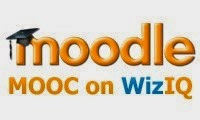This is an area of teaching and learning that I am really fond of, and I try to use apps and turn ESL and CLIL learning into mobile learning whenever I can in my lessons, so here I am, showing several practices some of my students have carried out using Aurasma, QR codes and mobile devices.
The first series of classroom practices I would like to share were designed by a group of CLIL teachers I used to teach in the North of Spain, and what they did, to put it in a nutshell, was to design a presentation of an item of their syllabus, which they wanted to show their own students, so as to flip their own lessons, using Wix, which they later turned into a videoclip and hid behind a QR Code. Thus, their own students could scan the code, view the teacher's presentation, grab the explanations and focus on hands-on work when in the face-to-face classroom.
Our goals, consisting of fostering the four skills when learning ESL and encouraging CLIL teachers to use ICT and mobile devices in their own lessons, were successfully achieved after several sessions working with Wix, iMovie, and Unitag Qr Code generator.
Here you are the links to their final outcomes:
- About Melinda Gates. By a Citizenship CLIL teacher; target audience: Secondary Education students.
- Structures. By a Vocational Training CLIL teacher; target audience: 13-year-old students.
- A Sonata Form. By a Music CLIL teacher; target audience: Secondary Education students.
- The World in Shapes. By a Kindergarden CLIL teacher; target audience: 3-year-old students.
The second ESL activity to support learning with an app I would like to share is an Aurasma weekend mystery, Augmenting The Union Jack: an Augmented Reality blog activity regarding a famous flag and some issues around it, by which a bunch of Secondary CLIL teachers who were my students in 2013, were shrunk-brained over a whole weekend while posting comments to solve the mystery hidden behind the flag and using their Aurasma app until the puzzle was finally sorted out on Monday morning and they were all very happy to have found out the answer and at the same time to have practised reading and writing skills in ESL, which was my ultimate goal anyway.
The online activity was posted on the classroom blog by a Thursday evening and consisted of an augmented image of the Union Jack, together with an overall question: 'If you were told to think of songs that have something to do with this flag, would you be able to hum at least one?'
Besides, we started a face-to-face discussion in class about flags and anthems, and the reflection proposal was left open for them to keep up the debate through blog comments after they had left the classroom: 'What is wrong with the flag and what it hides?' Of course, one can only find out what the flag hides by scanning it with the Aurasma app and then, once the tip is grabbed, there was the open debate, intensive and online from that Thursday night until the following Monday morning, when I finally posted the solution, following the thread of the students' own blog comments.
It was a very rewarding activity as it turned out really stimulating for the students, who were supported in their ESL learning skills with the Aurasma App.
And finally, I am also proud to share a sweet activity to support Primary students' learning with an app, although this time, I think I can talk of supporting connected teaching and learning with an app, as it is a virtual interview that a group of 11-year-old students from Alicante, in Spain, challenged me into by using FaceTime from iPad to iPad, lead by their enthusiastic teacher, @blogmaniacos, who had to borrow the Head of Studies' device in order to be able to open the door of her rural classroom, full of highly ICT skilled kids, and let me in. I was actually taught a wonderful virtual lesson and felt these kids had supported my own learning with app.
It was a warm May afternoon, full of emotions, virtually crossing the country thanks to an app (I was in Asturias, Northern Spain at the time), which proved that even without means, one can connect, teach and learn if one wishes to do so: an example of how technology and apps do not only support learning but also bring people together: Video Conference with Blogmaniacos.
Join The 30 Goals Challenge Community and our Facebook Group! You will find loads of goals to accomplish and be able to follow the virtual world tour.








